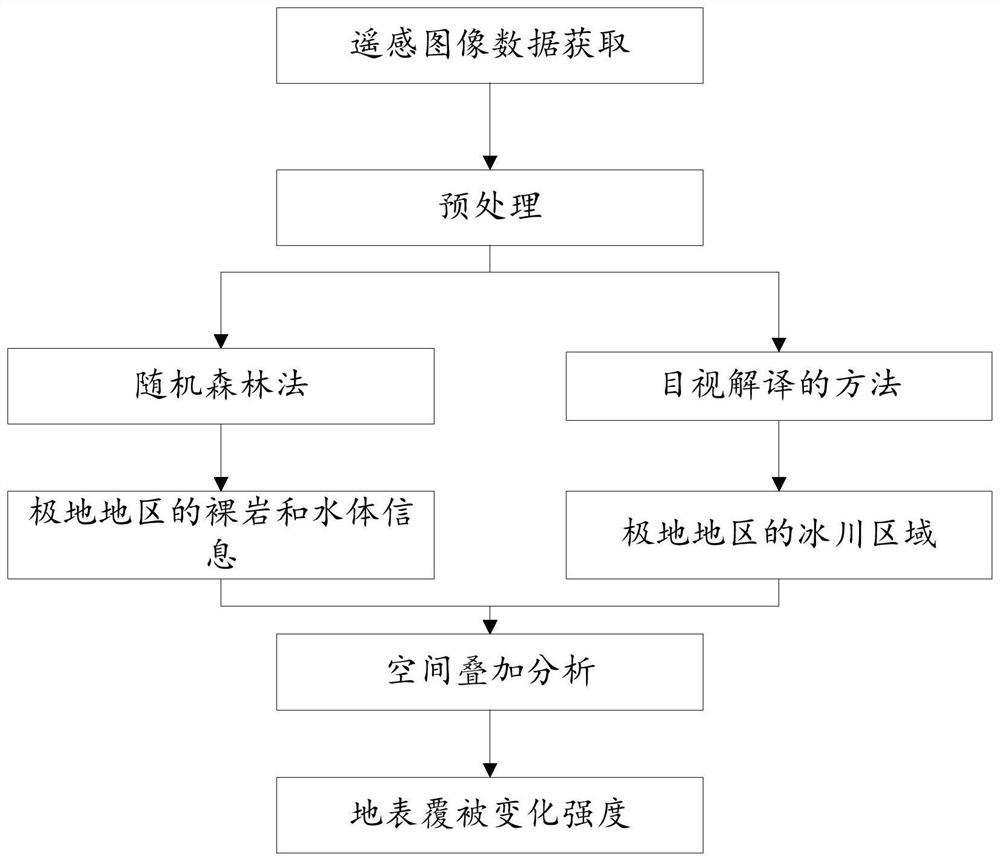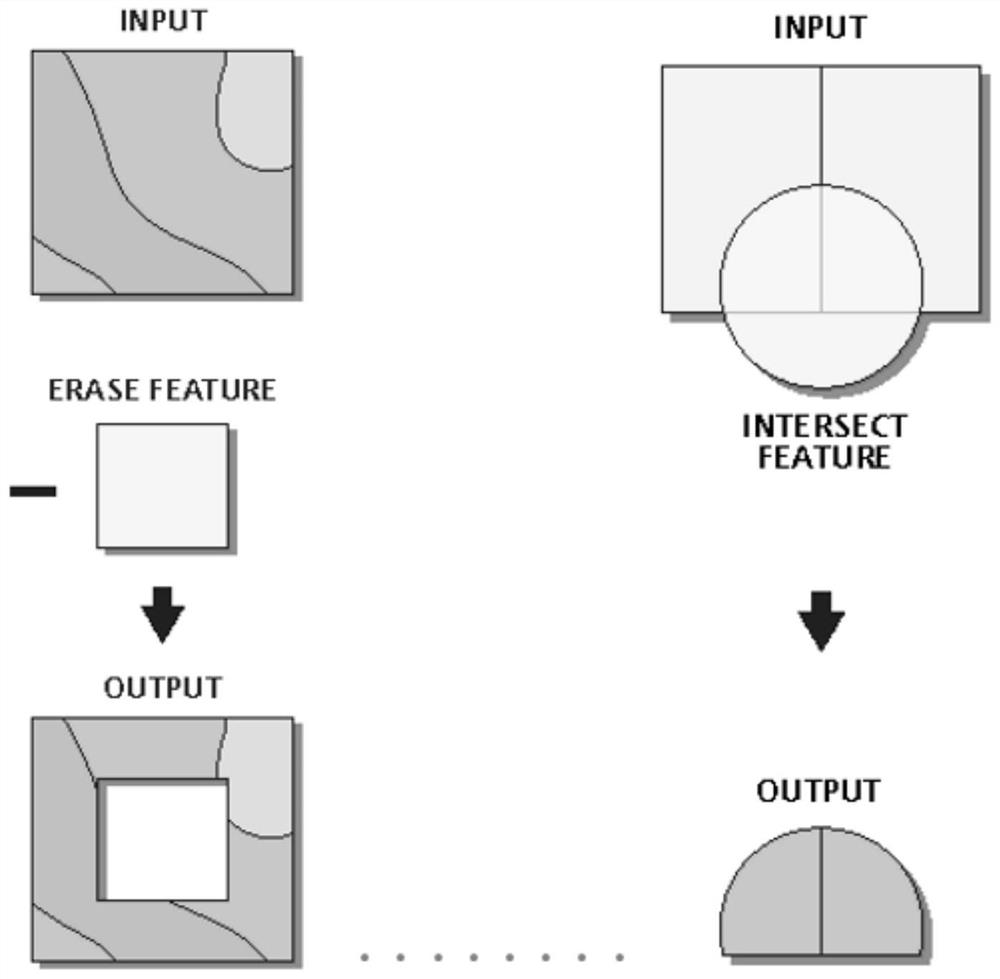Ground surface cover change intensity evaluation method and system for polar region
An intensity evaluation and regional technology, applied in the field of remote sensing, can solve the problem that inaccessible polar regions cannot be applied, and achieve the effect of realizing climate anomaly monitoring and improving accuracy
- Summary
- Abstract
- Description
- Claims
- Application Information
AI Technical Summary
Problems solved by technology
Method used
Image
Examples
Embodiment 1
[0030] In the technical solutions disclosed in one or more embodiments, such as figure 1 As shown, a method for evaluating the intensity of surface cover change in polar regions includes the following steps:
[0031] Step 100: obtaining remote sensing image data of the polar regions to be identified and preprocessing;
[0032] Step 200: According to the collected remote sensing data, use random forest classification to obtain bare rock and water body information in polar regions;
[0033] Step 300: According to the collected remote sensing data, use the method of visual interpretation to extract the outer edge of the glacier in the polar region to be identified, and use the threshold method to identify the type of the glacier;
[0034] Step 400: Perform spatial overlay analysis on the glacier area, rock mass and water body area obtained according to the remote sensing image data obtained in different periods to obtain the change area, and calculate and obtain the change inten...
Embodiment 2
[0075] Based on Embodiment 1, this embodiment provides a system for evaluating the intensity of changes in surface cover in polar regions, including:
[0076] Acquisition module: configured to acquire remote sensing image data of the polar regions to be identified;
[0077] The first identification module: is configured to obtain the bare rock and water body information in the polar regions according to the remote sensing data, using random forest classification;
[0078] The second identification module: configured to extract the outer edge of the glaciers in the polar regions to be identified by visual interpretation according to the remote sensing data, and to identify the glacier type by the threshold method;
[0079] Analysis module: It is configured to perform spatial overlay analysis on the glacier area, rock mass and water body area obtained according to the remote sensing image data obtained in different periods, to obtain the change area, and to calculate the change ...
Embodiment 3
[0081] Based on Embodiment 1, this embodiment provides an electronic device, which is characterized in that it includes a memory, a processor, and computer instructions stored in the memory and executed on the processor. When the computer instructions are executed by the processor, the above-mentioned steps are completed. The steps described in the example method.
PUM
 Login to View More
Login to View More Abstract
Description
Claims
Application Information
 Login to View More
Login to View More - R&D
- Intellectual Property
- Life Sciences
- Materials
- Tech Scout
- Unparalleled Data Quality
- Higher Quality Content
- 60% Fewer Hallucinations
Browse by: Latest US Patents, China's latest patents, Technical Efficacy Thesaurus, Application Domain, Technology Topic, Popular Technical Reports.
© 2025 PatSnap. All rights reserved.Legal|Privacy policy|Modern Slavery Act Transparency Statement|Sitemap|About US| Contact US: help@patsnap.com



